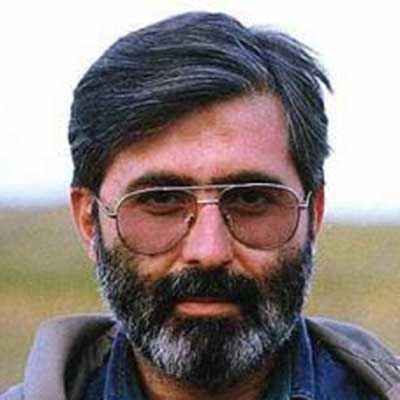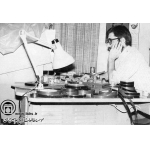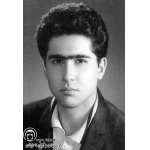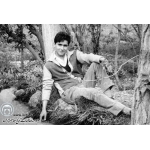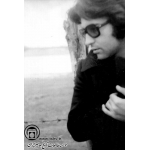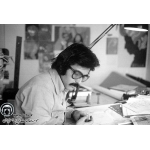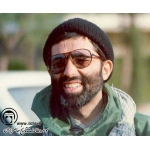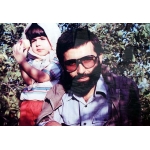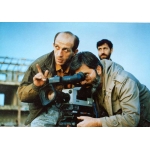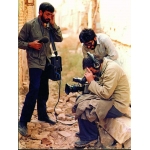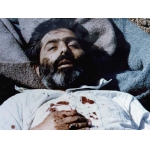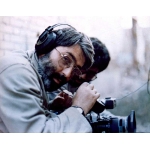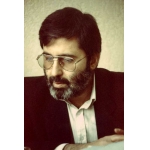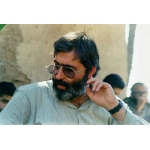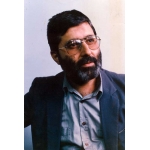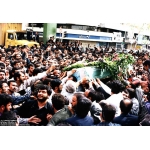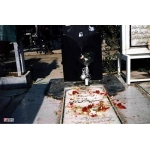Avini, Seyyed Morteza
Author: Masoumeh Abedini
445 بازدید
Seyyed Morteza Avini (1947–1993) was an author and documentary filmmaker, best known for his series Ravayat-e Fath (The Narration of Victory) produced during the Iran–Iraq War. Moreover, he served as the head of the Jihad Television Unit, editor-in-chief of the monthly magazine Sureh, and the head of the Cinema Unit at the Artistic Sect of the Islamic Propagation Organization.
Avini was born in 1947 in Rey, south of Tehran. His father was a mining engineer. He attended elementary and middle school in Zanjan, Kerman, and Tehran. After graduating from high school Avini attended university, earning a master's degree in architecture from Tehran University in 1975. He balanced both studying and working. During this time, Avini developed an interest in literary and philosophical books. He also actively engaged in artistic activities such as poetry slams, art galleries, and concerts. Additionally, martial arts, mountain climbing, and water sports were among his favorite pastimes.
Although Avini engaged in various academic activities and discussions, he realized that such pursuits would not lead to obtaining the truth. Consequently, he burned all his writings believing that they were mere expressions of his ego and a deviation from the truth. In 1979, he married Maryam Amini, a graduate in mathematics and computer science who shared his passion for art and literature. Their marriage resulted in the birth of two daughters and a son.
Following the victory of the Islamic Revolution, Avini’s literary works, including his philosophical writings, poems, and short stories, were imbued with religious beliefs. Later, in 1979 Avini joined the Jihad of Construction Organization to work in rural development projects. Subsequently, he joined the television team of Construction Jihad to produce documentaries.
His first film, made in 1979, was about a flood in Khuzestan.. His subsequent documentaries included Six Days in the Turkaman Sahara which covered anti-revolutionary activities in the Gonbad region, and The Bitten by the Khan which addressed the life of the landlords living in Firuzabad, Fars province.
With the onset of the Iran-Iraq War on September 22, 1980 and the siege of Khorramshahr, Avini and his colleagues produced The Victory of Blood followed by the series Truth. Avini's most renowned work, the television series The Narration of Victory began airing in 1985. This series, which depicted the true face of the war fronts, drew significant attention. He wrote the scripts and provided the narration for these documentaries.
In addition to his filmmaking, Avini was an active journalist. His articles initially appeared in the monthly magazine Etesam" and later in Jihad. Since 1989, he has been writing for the monthly Sureh where he also served as editor-in-chief for a period of time. The collection of his writings published in Sureh exceeds 2,500 pages. Among his other activities were the launch of the monthly magazine Fiction Literature and the establishment of the Center for Religious Studies of Art. He also headed the Scenario Section at the Art Bureau of the Islamic Propagation Organization for over a year and was in charge of the Cinema Unit as well. As a member of the jury at the 11th Fajr Film Festival, Avini played an active role in the festival selection process.
He was inspired by Quranic teachings, Nahj al-Balagha, the sayings of the Imams (as), and the works and speeches of Imam Khomeini (ra). For Avini, the emergence of the Islamic Revolution and the leadership of such a noble personality like Imam Khomeini (ra), marked the beginning of a new historical era, which he called the "Era of Repentance". This era, in his view, would culminate in the universal uprising of Imam Mahdi (as).
Along with his friends, Avini undertook numerous trips to Muslim-populated regions of the world, such as Lebanon, Palestine, Bosnia and Herzegovina, Pakistan, Tajikistan, and Azerbaijan.
These trips resulted in the production of a 21-episode series on Lebanon and Palestine, 13 episodes titled The Breeze of Life, 5 episodes titled The Stone Revolution (about the Palestinians’ Intifada), 3 episodes named The Burned, and 3 episodes titled Dagger and Poppy (about Bosnia and Herzegovina).
In 1992, Avini resumed the production of the television series The Narration of Victory and traveled to war zones. He had heard of the tunnels in the Fakkeh region where the bodies of dozens of Iranian fighters were buried. On April 9, 1993, Avini and his colleagues went to the area where he stepped on an unexploded landmine. The subsequent explosion resulted in one of his legs being severed, and due to severe blood loss, Avini was martyred on the way to the hospital. Saeed Yazdan-Parast was also was martyred in this incident.
On April 11, 1993 after the funeral procession was held with the presence of Ayatollah Khamenei, several ministers and members of the Islamic Consultative Assembly, and thousands of people, Seyyed Morteza Avini's body was buried in Behesht Zahra Cemetery in Tehran, where he was laid to rest in section 29.
Avini produced 25 series that were broadcast on television.
His written works include: Development and Foundations of Western Civilization, The Homeless Snails, The Beginning of an End, The Resurrection of Life, Another Tomorrow, The Magic Mirror (three volumes), The Breeze of Life, The Victory of Blood, The Heavenly Treasure, Imam and the Inner Life of Human, Talk to Me DoKoohe, The Center of Sky, An Enduring Experience, A City in the Sky, and Travel to the Land of Light.
In his writings, Avini extensively addressed the concept of martyrdom. Believing that a martyr would embrace death, he describes the "martyr" in his will: "Only the martyrs understand the reality of the secret of blood. Although man’s life is precious and sweet yet sacrificing it for the sake of Allah is sweeter".[1]
[1] A Summary of an Article Published in the Encyclopedia of the Islamic Revolution, Vol. 1, Tehran, Sureh-Mehr, 2005, P. 23.


